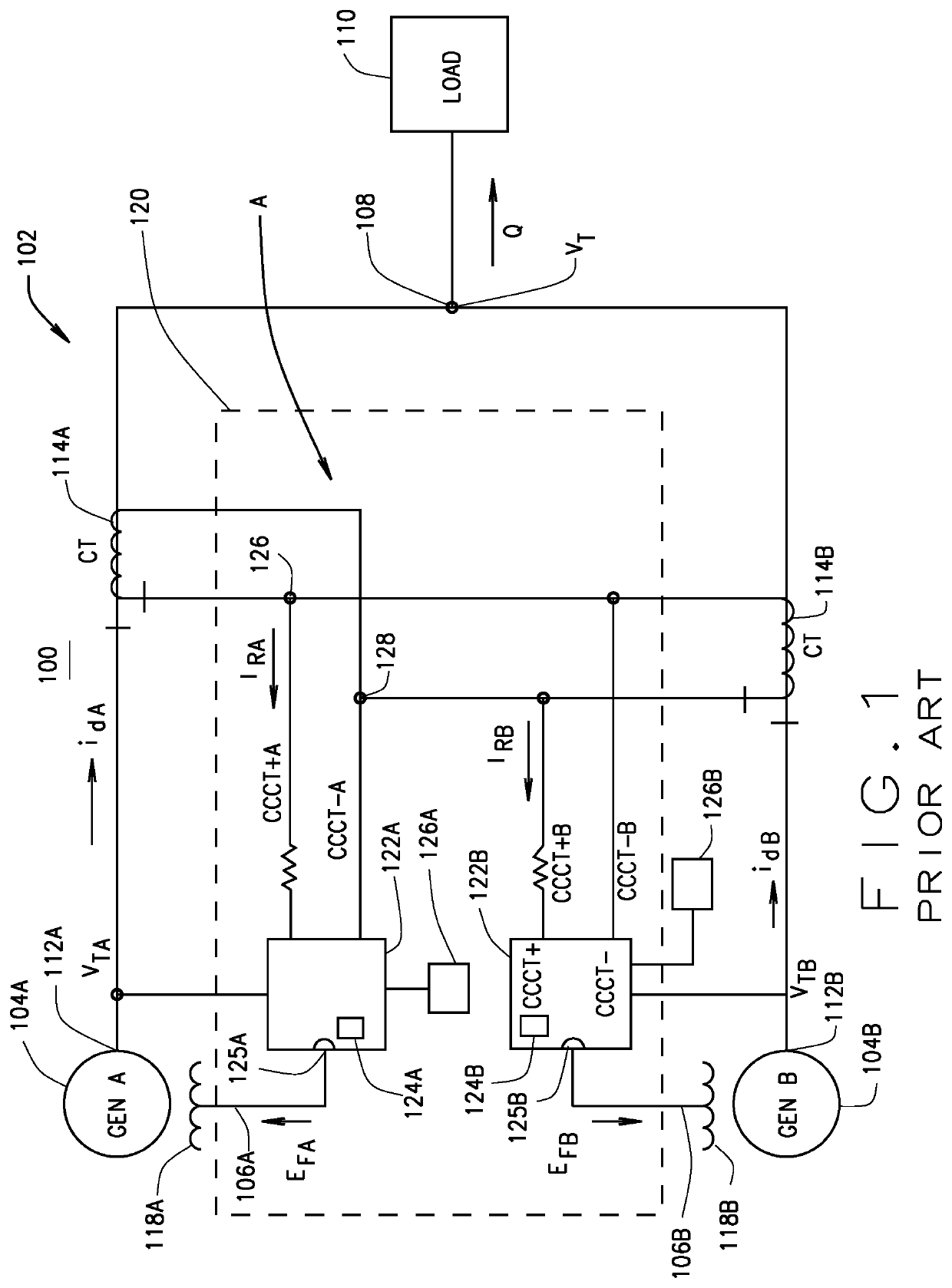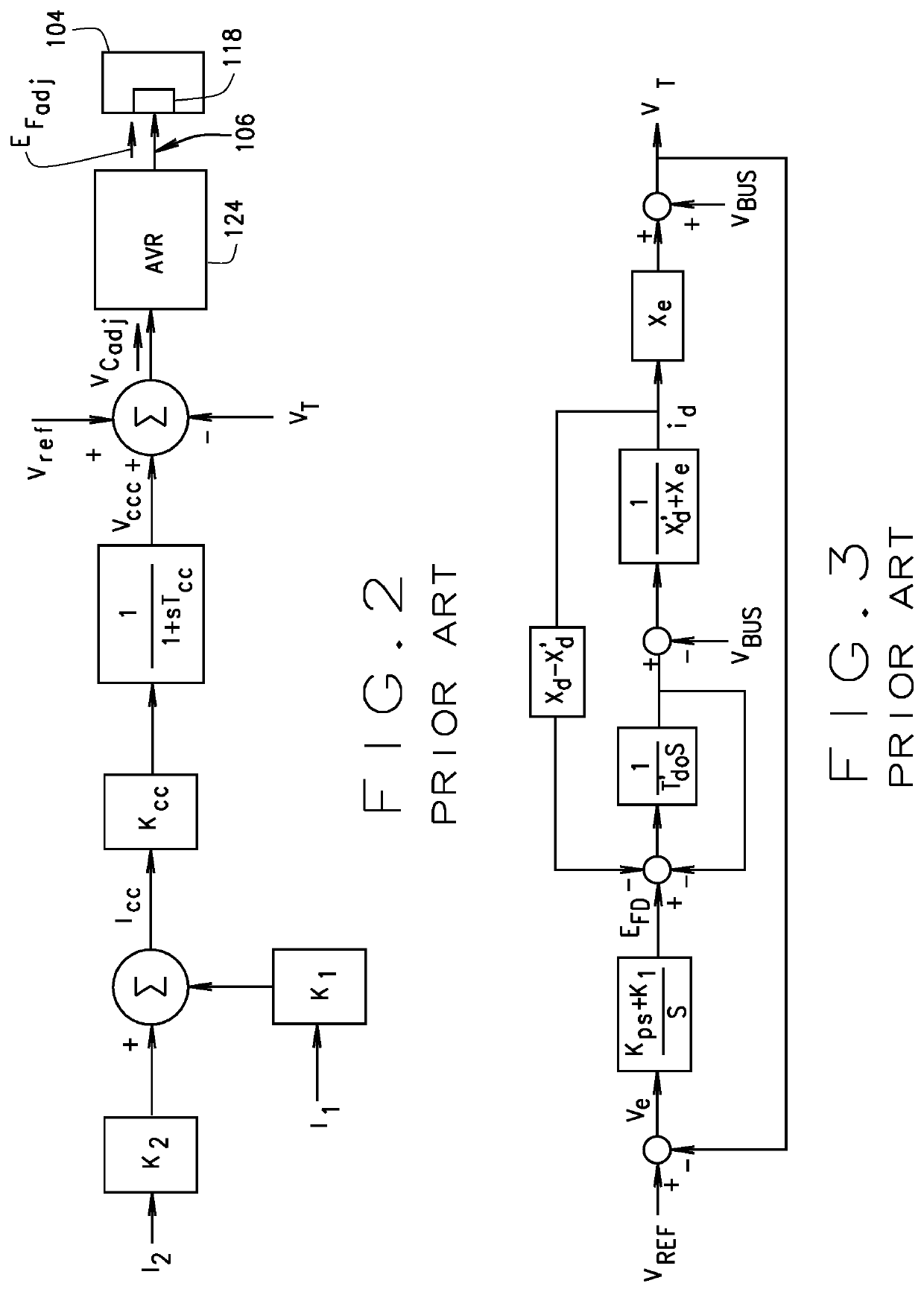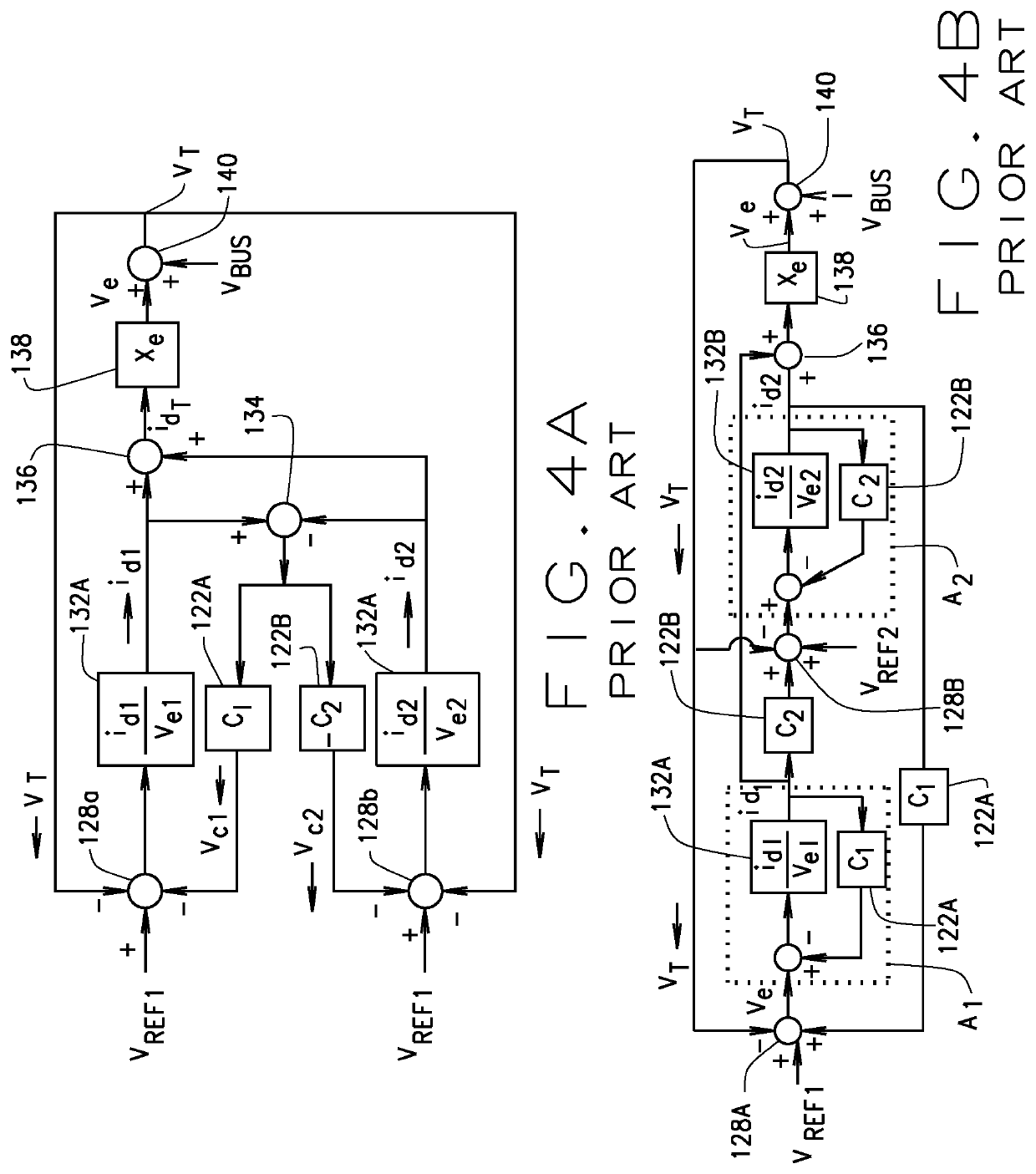Advanced cross current compensation system and method for enhancing reactive current sharing in power generation having multiple generators
a cross current compensation and reactive current technology, applied in the control system, electric generator control, reactive power adjustment/elimination/compensation, etc., can solve the problems of time-consuming field testing, high cost, and often inaccurate results
- Summary
- Abstract
- Description
- Claims
- Application Information
AI Technical Summary
Benefits of technology
Problems solved by technology
Method used
Image
Examples
Embodiment Construction
[0038]The following description is merely exemplary in nature and is not intended to limit the present disclosure or the disclosure's applications or uses.
[0039]The disclosed improved cross-current compensation CCC control system and method will be disclosed in more detail with reference to FIGS. 6-8. The present disclosure discloses a system and method of an improved CCC control system that uses a proportional integral controller PIC having an input, which is the difference between the reactive current of the controlled generators(IRtar) and average reactive current of all other paralleled generators (IR). KG and KI are the PI gains. As the PIC provides that no steady state error will exit, the presently disclosed system and method provides for the improved stable and robust operation of the multiple generators. With the disclosed improved control system and method, when the reactive current difference is equal to or about zero, the system reacts as the conventional CCC. However, t...
PUM
 Login to View More
Login to View More Abstract
Description
Claims
Application Information
 Login to View More
Login to View More - R&D
- Intellectual Property
- Life Sciences
- Materials
- Tech Scout
- Unparalleled Data Quality
- Higher Quality Content
- 60% Fewer Hallucinations
Browse by: Latest US Patents, China's latest patents, Technical Efficacy Thesaurus, Application Domain, Technology Topic, Popular Technical Reports.
© 2025 PatSnap. All rights reserved.Legal|Privacy policy|Modern Slavery Act Transparency Statement|Sitemap|About US| Contact US: help@patsnap.com



